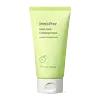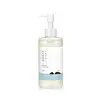What's inside
What's inside
 Key Ingredients
Key Ingredients

 Benefits
Benefits

 Concerns
Concerns

 Ingredients Side-by-side
Ingredients Side-by-side

Water
Skin ConditioningCetyl Ethylhexanoate
EmollientOctyldodecanol
EmollientIsopropyl Palmitate
EmollientHydrogenated Poly(C6-14 Olefin)
EmollientButylene Glycol
HumectantDicaprylyl Ether
EmollientDipropylene Glycol
HumectantHydrogenated Vegetable Oil
Emollient1,2-Hexanediol
Skin ConditioningGlyceryl Stearate
EmollientCetearyl Alcohol
EmollientPolysorbate 60
EmulsifyingParfum
MaskingC14-22 Alcohols
Emulsion StabilisingCarbomer
Emulsion StabilisingTromethamine
BufferingC12-20 Alkyl Glucoside
EmulsifyingGlyceryl Caprylate
EmollientDisodium EDTA
Ethylhexylglycerin
Skin ConditioningPyrus Malus Seed Oil
EmollientCoco-Caprylate/Caprate
EmollientCaprylic/Capric Triglyceride
MaskingPyrus Malus Fruit Extract
Skin ConditioningGlucose
HumectantTocopherol
AntioxidantGlycine Soja Oil
EmollientWater, Cetyl Ethylhexanoate, Octyldodecanol, Isopropyl Palmitate, Hydrogenated Poly(C6-14 Olefin), Butylene Glycol, Dicaprylyl Ether, Dipropylene Glycol, Hydrogenated Vegetable Oil, 1,2-Hexanediol, Glyceryl Stearate, Cetearyl Alcohol, Polysorbate 60, Parfum, C14-22 Alcohols, Carbomer, Tromethamine, C12-20 Alkyl Glucoside, Glyceryl Caprylate, Disodium EDTA, Ethylhexylglycerin, Pyrus Malus Seed Oil, Coco-Caprylate/Caprate, Caprylic/Capric Triglyceride, Pyrus Malus Fruit Extract, Glucose, Tocopherol, Glycine Soja Oil
Ethylhexyl Stearate
EmollientSorbeth-30 Tetraoleate
EmulsifyingDiisostearyl Malate
EmollientEthylhexylglycerin
Skin ConditioningWater
Skin ConditioningOenothera Biennis Oil
EmollientLimnanthes Alba Seed Oil
Skin ConditioningPersea Gratissima Oil
Skin ConditioningVitis Vinifera Seed Oil
EmollientCanola Oil
EmollientMacadamia Integrifolia Seed Oil
Skin ConditioningSea Water
HumectantButylene Glycol
HumectantAllantoin
Skin ConditioningPanthenol
Skin Conditioning1,2-Hexanediol
Skin ConditioningCaprylic/Capric Triglyceride
MaskingPhosphatidylcholine
EmulsifyingHyaluronic Acid
HumectantCeramide NP
Skin ConditioningGlycine
BufferingHydrolyzed Hyaluronic Acid
HumectantGlutamic Acid
HumectantSerine
MaskingSodium Hyaluronate
HumectantLysine
Skin ConditioningAlanine
MaskingArginine
MaskingThreonine
Proline
Skin ConditioningCitrus Aurantium Bergamia Fruit Oil
MaskingSalvia Officinalis Oil
MaskingTocopherol
AntioxidantEthylhexyl Stearate, Sorbeth-30 Tetraoleate, Diisostearyl Malate, Ethylhexylglycerin, Water, Oenothera Biennis Oil, Limnanthes Alba Seed Oil, Persea Gratissima Oil, Vitis Vinifera Seed Oil, Canola Oil, Macadamia Integrifolia Seed Oil, Sea Water, Butylene Glycol, Allantoin, Panthenol, 1,2-Hexanediol, Caprylic/Capric Triglyceride, Phosphatidylcholine, Hyaluronic Acid, Ceramide NP, Glycine, Hydrolyzed Hyaluronic Acid, Glutamic Acid, Serine, Sodium Hyaluronate, Lysine, Alanine, Arginine, Threonine, Proline, Citrus Aurantium Bergamia Fruit Oil, Salvia Officinalis Oil, Tocopherol
 Reviews
Reviews

Ingredients Explained
These ingredients are found in both products.
Ingredients higher up in an ingredient list are typically present in a larger amount.
1,2-Hexanediol is a synthetic liquid and another multi-functional powerhouse.
It is a:
- Humectant, drawing moisture into the skin
- Emollient, helping to soften skin
- Solvent, dispersing and stabilizing formulas
- Preservative booster, enhancing the antimicrobial activity of other preservatives
Butylene Glycol (or BG) is used within cosmetic products for a few different reasons:
Overall, Butylene Glycol is a safe and well-rounded ingredient that works well with other ingredients.
Though this ingredient works well with most skin types, some people with sensitive skin may experience a reaction such as allergic rashes, closed comedones, or itchiness.
Learn more about Butylene GlycolThis ingredient is an emollient, solvent, and texture enhancer. It is considered a skin-softener by helping the skin prevent moisture loss.
It helps thicken a product's formula and makes it easier to spread by dissolving clumping compounds.
Caprylic Triglyceride is made by combining glycerin with coconut oil, forming a clear liquid.
While there is an assumption Caprylic Triglyceride can clog pores due to it being derived from coconut oil, there is no research supporting this.
Learn more about Caprylic/Capric TriglycerideEthylhexylglycerin (we can't pronounce this either) is commonly used as a preservative and skin softener. It is derived from glyceryl.
You might see Ethylhexylglycerin often paired with other preservatives such as phenoxyethanol. Ethylhexylglycerin has been found to increase the effectiveness of these other preservatives.
Tocopherol (also known as Vitamin E) is a common antioxidant used to help protect the skin from free-radicals and strengthen the skin barrier. It's also fat soluble - this means our skin is great at absorbing it.
Vitamin E also helps keep your natural skin lipids healthy. Your lipid skin barrier naturally consists of lipids, ceramides, and fatty acids. Vitamin E offers extra protection for your skin’s lipid barrier, keeping your skin healthy and nourished.
Another benefit is a bit of UV protection. Vitamin E helps reduce the damage caused by UVB rays. (It should not replace your sunscreen). Combining it with Vitamin C can decrease sunburned cells and hyperpigmentation after UV exposure.
You might have noticed Vitamin E + C often paired together. This is because it is great at stabilizing Vitamin C. Using the two together helps increase the effectiveness of both ingredients.
There are often claims that Vitamin E can reduce/prevent scarring, but these claims haven't been confirmed by scientific research.
Learn more about TocopherolWater. It's the most common cosmetic ingredient of all. You'll usually see it at the top of ingredient lists, meaning that it makes up the largest part of the product.
So why is it so popular? Water most often acts as a solvent - this means that it helps dissolve other ingredients into the formulation.
You'll also recognize water as that liquid we all need to stay alive. If you see this, drink a glass of water. Stay hydrated!
Learn more about Water